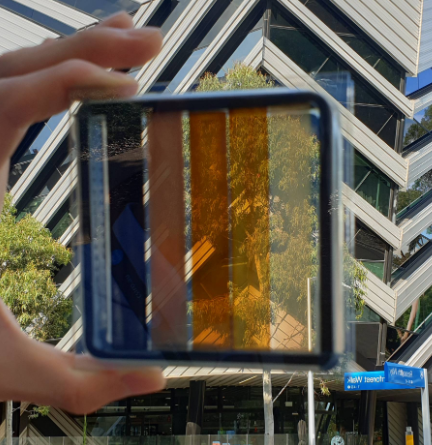Windows seen as new source
 Australian engineers are working on windows that can generate electricity.
Australian engineers are working on windows that can generate electricity.
A new paper describes semi-transparent solar cells that can be incorporated into window glass, described as a potential “game-changer”.
A team from the ARC Centre of Excellence in Exciton Science and Monash University are producing next-gen perovskite solar cells that generate electricity while allowing light to pass through.
They are now investigating how the new technology could be built into commercial products with Viridian Glass, Australia’s largest glass manufacturer.
This technology will transform windows into active power generators, potentially revolutionising building design. Two square metres of solar window, the researchers say, will generate about as much electricity as a standard rooftop solar panel.
The idea of semi-transparent solar cells is not new, but previous designs have failed because they were very expensive, unstable or inefficient, but the new design uses a different approach.
The team used an organic semiconductor that can be made into a polymer and used it to replace a commonly used solar cell component (known as Spiro-OMeTAD), which shows very low stability because it develops an unhelpful watery coating. The substitute produced astonishing results.
“Rooftop solar has a conversion efficiency of between 15 and 20 per cent,” said research leader Professor Jacek Jasieniak.
“The semi-transparent cells have a conversion efficiency of 17 per cent, while still transmitting more than 10 per cent of the incoming light, so they are right in the zone. It’s long been a dream to have windows that generate electricity, and now that looks possible.”
Solar windows will be a boon for building owners and residents, and will bring new challenges and opportunities for architects, builders, engineers and planners.
“There is a trade-off,” explained Professor Jasieniak.
“The solar cells can be made more, or less, transparent. The more transparent they are, the less electricity they generate, so that becomes something for architects to consider.”
He added that solar windows tinted to the same degree as current glazed commercial windows would generate about 140 watts of electricity per square metre.
“The semi-transparent cells have a conversion efficiency of 17 per cent, while still transmitting more than 10 per cent of the incoming light, so they are right in the zone. It’s long been a dream to have windows that generate electricity, and now that looks possible.”








 Print
Print